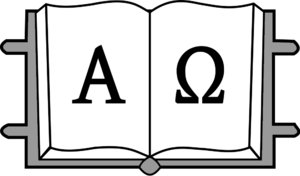 From time to time I make new entries into this continuing series called “Theological Primer.” The idea is to present big theological concepts in under 500 words (or pretty close–what’s a couple hundred words among friends?). Today we look at the eternality of the Son of God.
From time to time I make new entries into this continuing series called “Theological Primer.” The idea is to present big theological concepts in under 500 words (or pretty close–what’s a couple hundred words among friends?). Today we look at the eternality of the Son of God.
*******
There never was when he was not.
That was the bone of contention with Arianism, the fourth century heresy which rejected the full deity of the Son of God. The issue was not whether the Son was divine in some sense, but whether he shared the same essence (homoousia) as the Father. In particular, Arius held that sonship necessarily implied having a beginning. While Arius affirmed that Christ was preexistent and that all things were created through him, he also believed that the Father created the Son. According to Arius, “If the Father begat the Son, he that was begotten has a beginning of existence; hence it is clear that there was when he was not.” Arius was careful not to use the word “time,” because he believed the Son existed before the ages began, but for Arius eternality and sonship could not go together. The Son was a divine being, but a created being with a derivative deity
How should we respond to this claim? It’s not enough to point to passages where Christ is worshiped or where the deity of the Son is broadly affirmed. Arius did not reject these conclusions and neither do modern day Arians. Where do we turn to defend the belief that there never was when the Son of God was not?
Four passages come to mind:
1) In John 8:58 Jesus says to his opponents, “before Abraham was, I am.” Not only does Jesus link himself to Yahweh’s great “I AM” statement of Exodus 3:14, he also makes allusion to the “I am” declarations in Isaiah 40-55 (e.g., “I, the Lord, the first, and with the last; I am he” [Isa. 41:4]). Jesus considered himself as eternal as the God of the Old Testament was eternal. Little wonder some unbelieving Jews thought him a blasphemer and tried to kill him (John 8:59).
2) Likewise, Philippians 2:5-11 places Christ Jesus right in the middle of the most exalted language of Isaiah 45-46. The prediction that every knee will bow and every tongue confess that Jesus Christ is Lord (v. 10-11), comes from Isaiah 45:23. Jesus is identified with the God who says “I am” and “there is no other” (Isa. 45:22), with the God who declares the end from the beginning (Isa. 46:9-10).
3) Hebrews 7:3 describes Melchizedek–the mysterious king of Salem from Genesis 14–as “having neither beginning of days nor end of life.” Whatever this means about Melchizedek himself (a pre-incarnate Christ or simply a type of Christ), for the analogy to hold (“resembling the Son of God”) Christ must also have neither beginning of days nor end of life.
4) Most convincingly, in Revelation 22:13 Jesus announces, “I am the Alpha and the Omega, the first and the last, the beginning and the end.” Earlier in the book, God says the same thing, making specific reference to his eternality as the one who is and who was and who is to come (Rev. 1:8; 21:6). In whatever sense the Father is the beginning and the end, so is the Son. One cannot be more or less eternal than the other.
No matter our experience of sonship (i.e., having a beginning), the divine must be the lens through which we understand the human, not the other way around. Without the eternality of the Son, we do not have a Christ who can fully save because we do not have a Christ who shares in all the attributes of deity. Without eternal Sonship, we cannot affirm that the Father has always been the Father. And if the Father has not always been in communion with the Son, then love cannot be eternal, for the Father would have had to create another being in order to give and receive love. Likewise, it is only with eternal Sonship that the economic Trinity (that which we see about God in the unfolding of redemptive history) corresponds to any real ultimate truth about God. The God who is must be the God who always was.


















